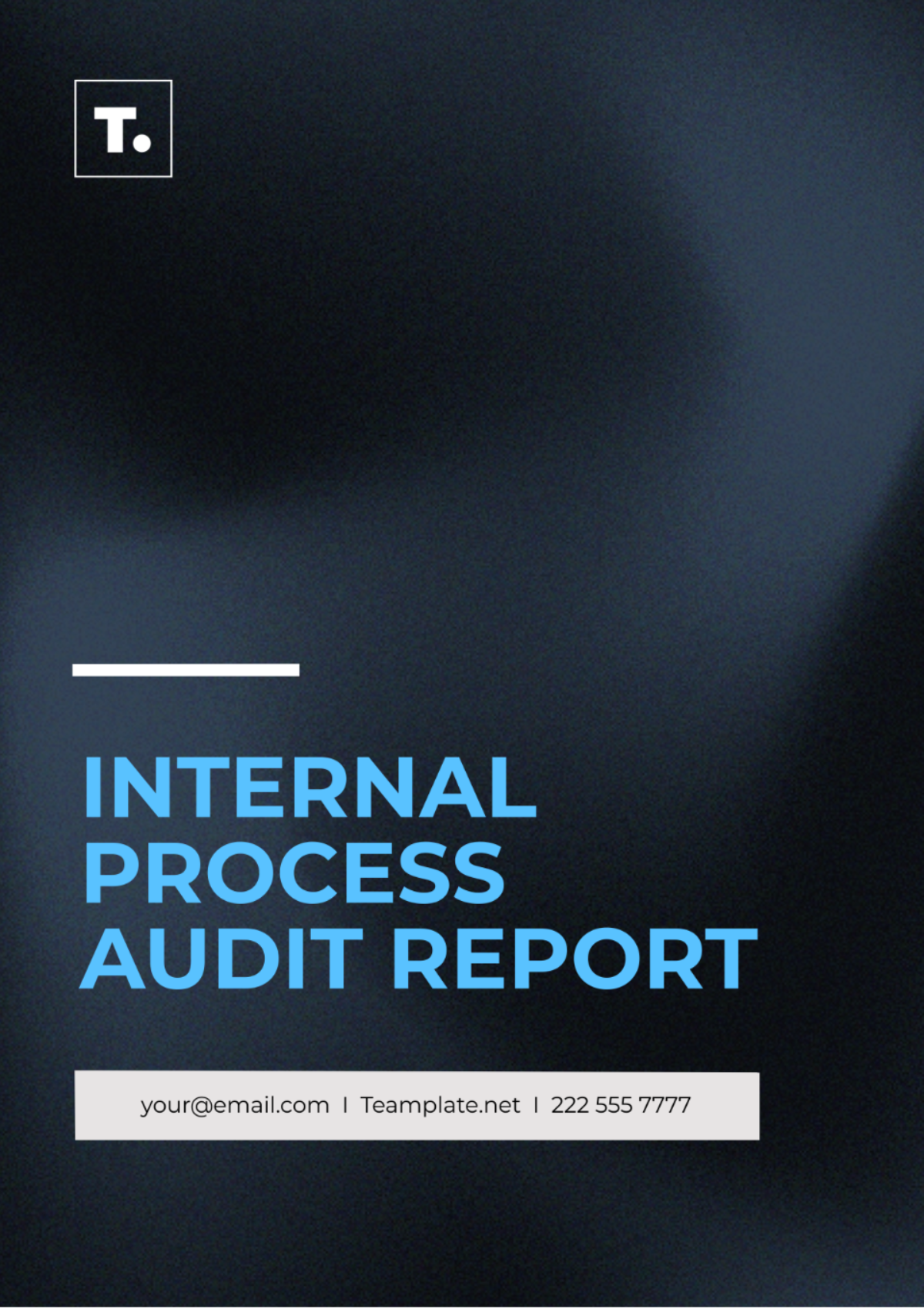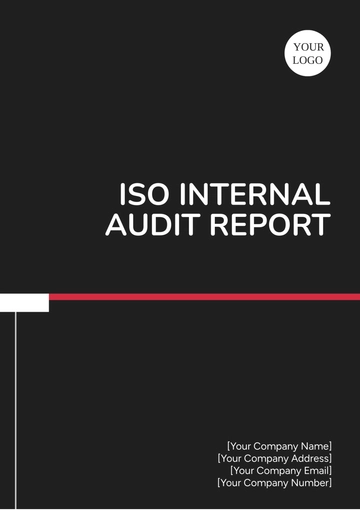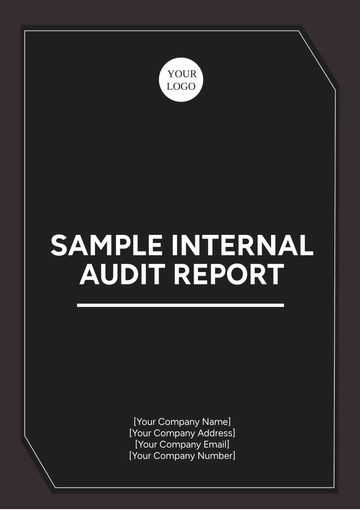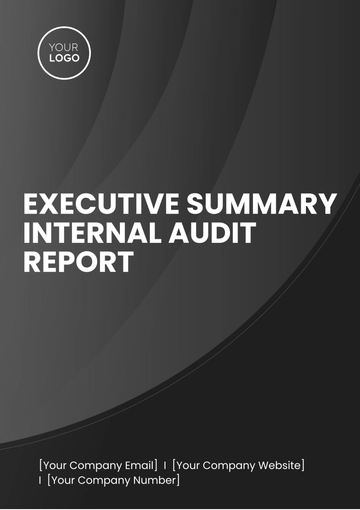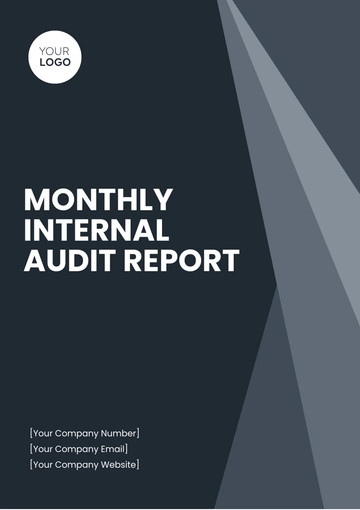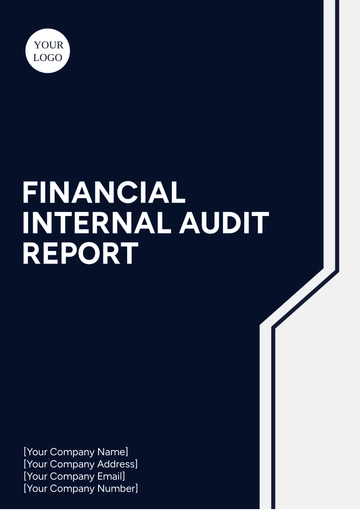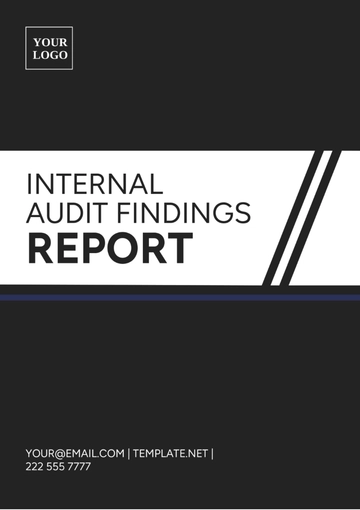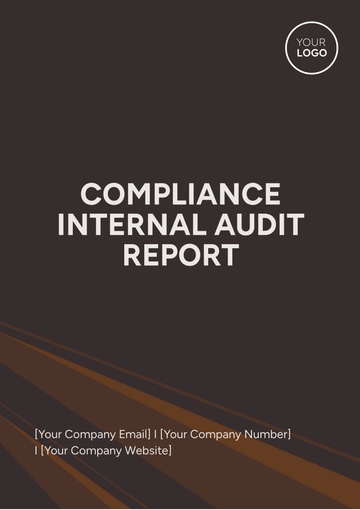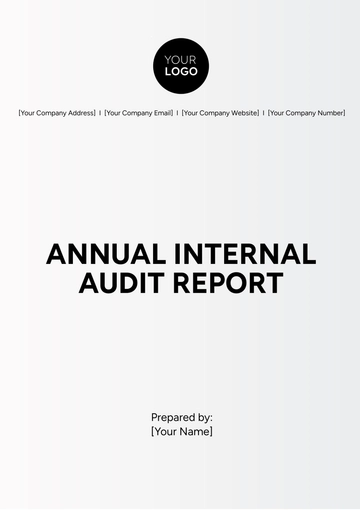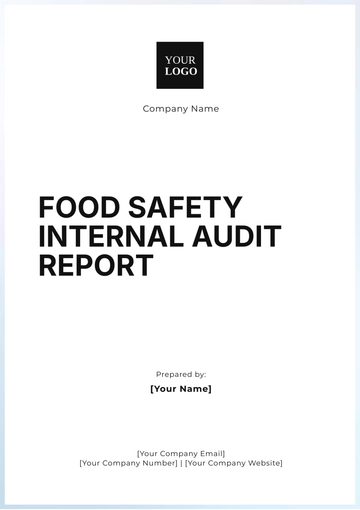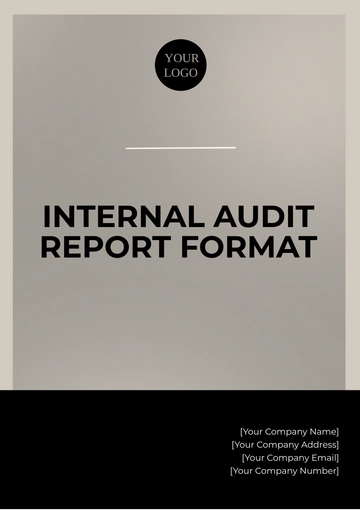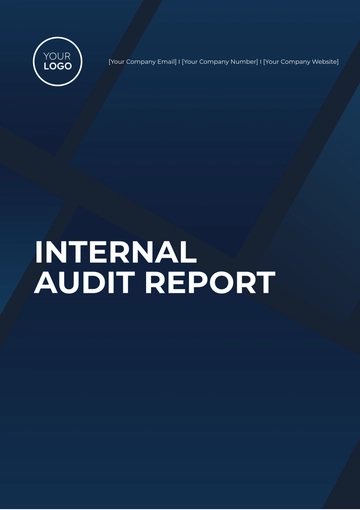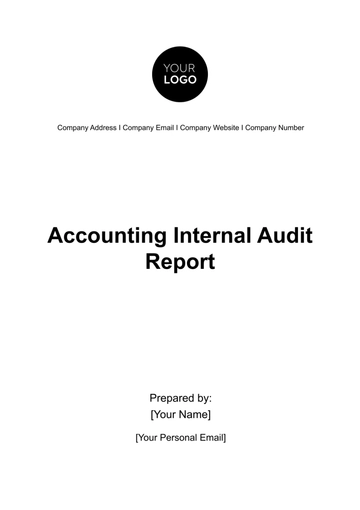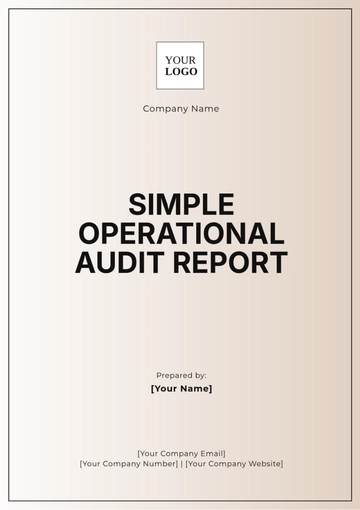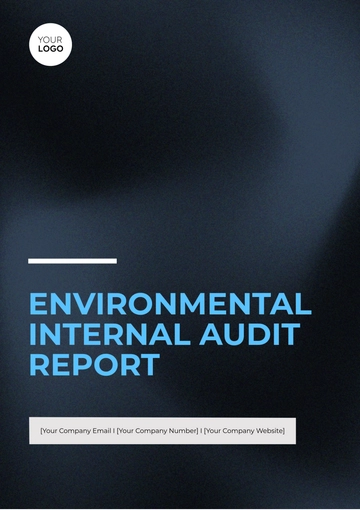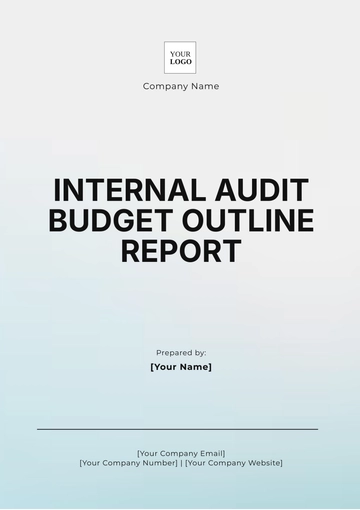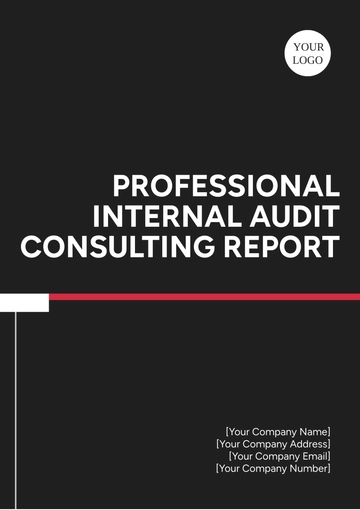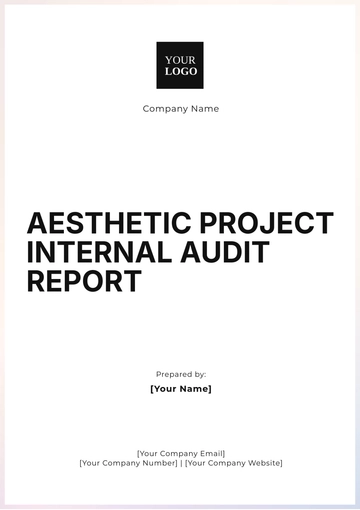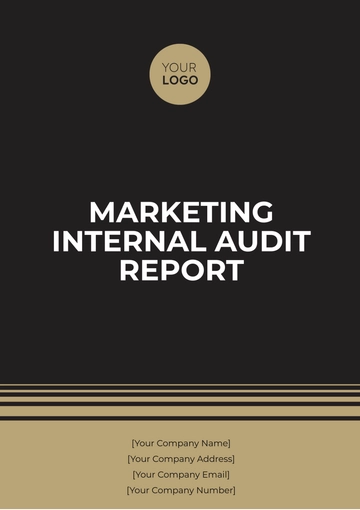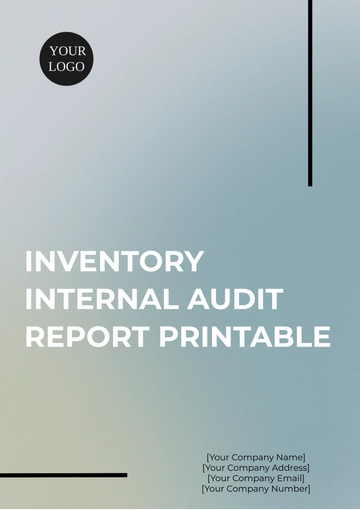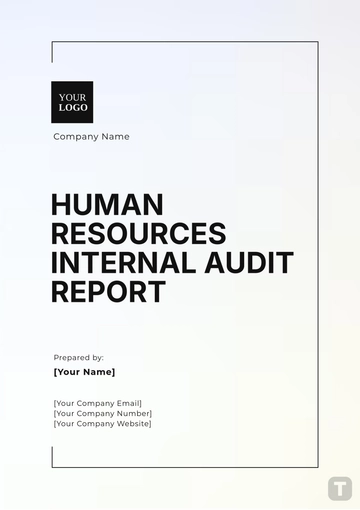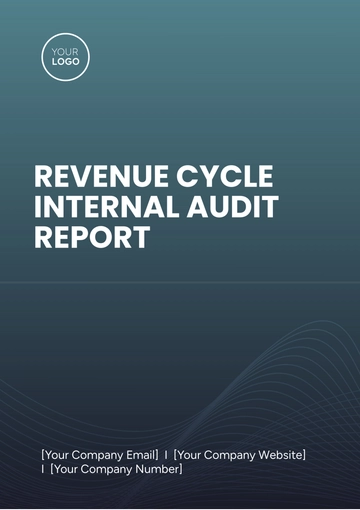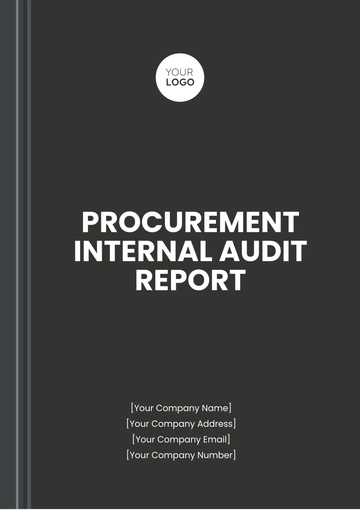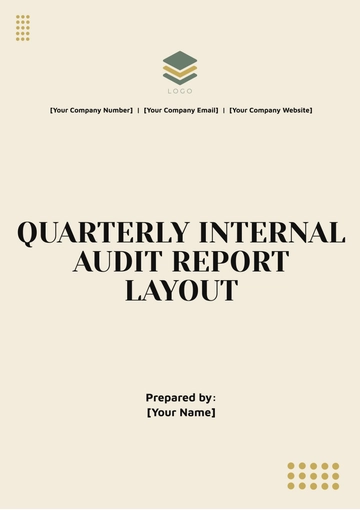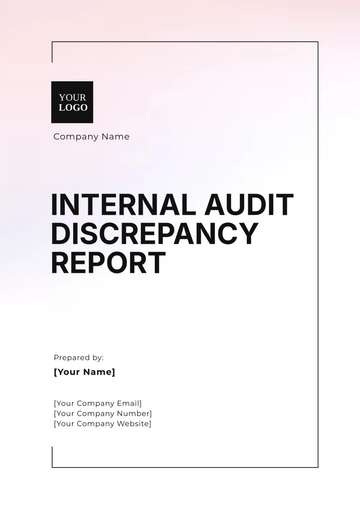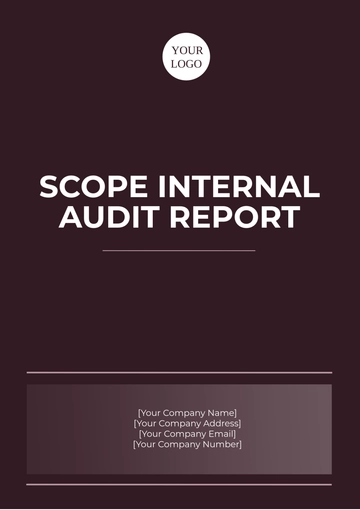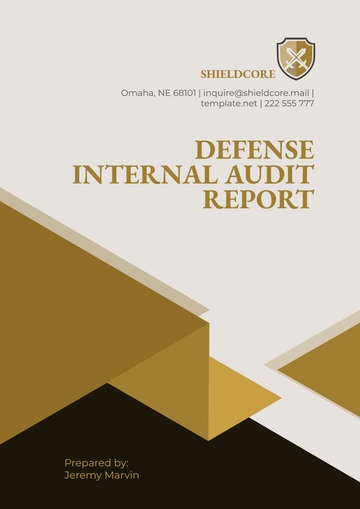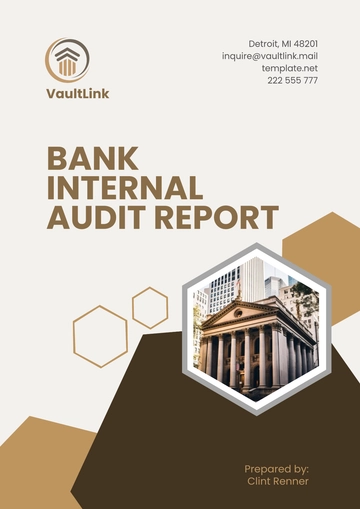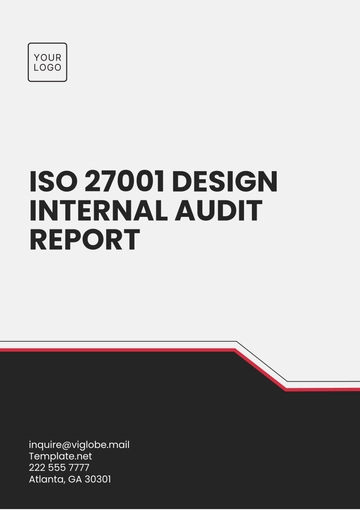Internal Process Audit Report
I. Introduction
This Internal Process Audit Report presents the findings and recommendations resulting from an audit conducted at [YOUR COMPANY NAME] to evaluate the effectiveness, efficiency, and compliance of internal processes and procedures. The audit aimed to identify strengths and weaknesses in current practices to enhance operational performance and ensure alignment with organizational objectives.
II. Audit Scope
The audit encompassed a comprehensive evaluation of various operational areas within [YOUR COMPANY NAME]. The scope was designed to assess the effectiveness, efficiency, and compliance of internal processes and procedures across key functional domains:
A. Financial Processes
The audit examined the financial processes to ensure accuracy, reliability, and compliance with regulatory standards. Specific areas reviewed included:
Accounts Payable: Evaluation of invoice processing accuracy, timeliness, and adherence to approval protocols.
Budget Management: Analysis of budget allocation, variance reporting, and effectiveness of budget monitoring procedures.
Financial Reporting: Review of financial statement preparation, internal controls over financial reporting, and compliance with accounting standards.
B. Human Resources Procedures
The audit focused on human resources practices to ensure fairness, transparency, and compliance with employment laws and organizational policies. Key areas assessed were:
Recruitment and Selection: Evaluation of recruitment procedures, including job postings, candidate screening, and selection criteria.
Performance Management: Assessment of performance appraisal processes, feedback mechanisms, and alignment with organizational goals.
Training and Development: Review of training programs, skills development initiatives, and training needs assessment practices.
C. Information Technology Systems
The audit evaluated the effectiveness and security of information technology systems to safeguard data integrity, confidentiality, and availability. Areas of focus included:
Data Security: Analysis of data protection measures, including encryption, access controls, and vulnerability management.
System Availability: Examination of system uptime, reliability, and disaster recovery preparedness.
IT Governance: Review of IT policies, procedures, and compliance with industry standards and regulatory requirements.
D. Compliance with Regulatory Requirements
The audit ensured adherence to applicable laws, regulations, and industry standards to mitigate regulatory risks and maintain organizational integrity. Specific compliance areas examined were:
Regulatory Compliance: Assessment of compliance with local, national, and international regulations relevant to the industry.
Environmental Compliance: Review of environmental management practices, waste disposal procedures, and adherence to environmental regulations.
Product Compliance: Evaluation of product labeling, safety standards, and conformity assessment processes.
III. Methodology
The audit was conducted using a combination of interviews, document reviews, and observations. Audit procedures were designed to assess adherence to internal policies and procedures, regulatory compliance, and effectiveness in achieving organizational goals.
IV. Findings
A. Financial Processes
Table 1: Accounts Payable Audit Findings
Finding Description | Recommendation(s) |
|---|
Identified delays in invoice processing due to manual entry errors. | Implement an automated invoice processing system. |
Lack of segregation of duties observed in the approval process. | Establish a clear segregation of duties policy. |
Table 2: Budget Management Audit Findings
Finding Description | Recommendation(s) |
|---|
Budget variances noted in several departments. | Implement more rigorous budget monitoring practices. |
Inconsistent budget monitoring practices identified. | Standardize budget monitoring procedures across all departments. |
B. Human Resources Procedures
Table 3: Recruitment and Selection Audit Findings
Finding Description | Recommendation(s) |
|---|
Lack of standardized interview evaluation criteria. | Develop and implement standardized interview evaluation forms. |
Documentation discrepancies found in employee files. | Conduct regular audits of employee files for accuracy. |
Table 4: Performance Management Audit Findings
Finding Description | Recommendation(s) |
|---|
Inadequate feedback mechanisms observed in the performance review process. | Implement structured performance feedback mechanisms. |
Training needs assessment not consistently conducted. | Establish a regular schedule for conducting training needs assessments. |
C. Information Technology Systems
Table 5: Data Security Audit Findings
Finding Description | Recommendation(s) |
|---|
Outdated firewall settings identified. | Upgrade firewall infrastructure to current industry standards. |
Insufficient user access controls noted in critical systems. | Enhance user access control mechanisms. |
Table 6: System Availability Audit Findings
Finding Description | Recommendation(s) |
|---|
Downtime incidents reported due to server maintenance scheduling conflicts. | Develop and implement a comprehensive server maintenance schedule. |
Lack of disaster recovery plan for key systems. | Establish a robust disaster recovery plan for all critical systems. |
D. Compliance with Regulatory Requirements
Table 7: Industry Standards Audit Findings
Finding Description | Recommendation(s) |
|---|
Non-compliance with specific industry regulations related to product labeling. | Conduct immediate corrective actions to comply with labeling regulations. |
Documentation gaps in proving compliance with environmental regulations. | Enhance documentation practices to ensure compliance with environmental regulations. |
V. Recommendations
Based on the findings, the following recommendations are proposed to address identified weaknesses and improve overall operational efficiency:
A. Financial Processes
Implement an automated invoice processing system to reduce errors and processing time.
Establish a clear segregation of duties policy and enforce strict adherence to approval protocols.
B. Human Resources Procedures
Develop standardized interview evaluation forms and ensure consistent use across all hiring processes.
Implement a structured performance feedback mechanism with mandatory quarterly reviews.
C. Information Technology Systems
Upgrade firewall infrastructure to current industry standards and enhance user access control mechanisms.
Develop and implement a comprehensive disaster recovery plan to ensure minimal system downtime and data loss.
D. Compliance with Regulatory Requirements
Conduct regular audits to ensure compliance with industry regulations and address identified gaps promptly.
Enhance documentation practices to maintain accurate records of regulatory compliance efforts.
VI. Conclusion
In conclusion, this Internal Process Audit Report highlights areas where improvements are needed to strengthen internal controls, enhance operational efficiency, and ensure compliance with regulatory requirements. Implementation of the proposed recommendations will contribute to achieving organizational objectives and maintaining competitive advantage in the marketplace.
Report Templates @ Template.net
